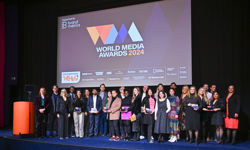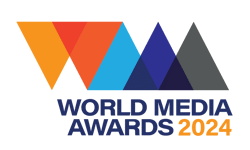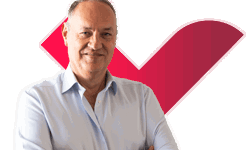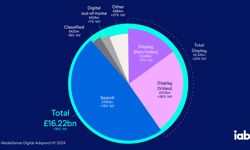
The event, held on 16th November, brought together a broad selection of digital publishers and partners to discuss avenues for collaboration that can strengthen the industry as it faces a period of existential challenges.
Three publisher collaboratives pooling resources for mutual benefit
Dipti Patel, publisher development director for The Ozone Project kicked off the day with a brief history on the relationship between the industry and advertisers in the digital realm. Twenty years ago, publishers and advertisers had a one-to-one relationship. Then programmatic infrastructure shifted the power dynamic, putting publisher inventory and data in the hands of intermediaries that extracted value from the ecosystem at publishers’ expense.
Fast forward to today, and Patel summarised the situation with a sobering Press Gazette headline: ‘UK ad spend to grow in 2023 – but only the tech giants will benefit’. Studies have shown people spend more time on the open web than walled gardens, yet the former accounts for a fraction of ad spend. Patel blames premium publishers being lumped into the same investment category as any other website on the open exchange, where low prices return equally low value.
The Ozone Project overcomes this by unifying editorially-led, premium publishers – which Patel noted have more in common than not – under a single technology platform built by publishers, for publishers. It offers a unified buying experience at greater scale, and more command of the supply chain than if publishers were selling inventory independently.
The Scottish Beacon also brings together around 20 publishers, though is solely focused on networking local news outlets within Scotland. Rhiannon Davies, the founder and project manager, was inspired by projects she encountered while researching local news collaboratives in the US, such as the Charlotte Journalism Collaborative and Word in Black.
Local news coverage in Scotland has been undermined by big publishers stripping back and consolidating regional wings. This has left communities reliant on local outlets that are often volunteer led, operating on shoestring budgets, or dependent on a single person. They provide a vital voice for their communities, but their survival walks on a tightrope due to their economic vulnerability and geographic isolation.
By bringing together such outlets – most of which have never been a part of any sort of network – The Scottish Beacon provides a hub to share editorial resources, monetisation advice, training, peer support, or whatever else its members put on the table. The Scottish Beacon’s recently launched website provides a portal for members to host content, and the group is looking into collective ad selling and a unified membership and engagement framework.
Most importantly, The Scottish Beacon’s collaborative support protects community voices, which Davies stressed has both local and national impact.
“If a community centre shuts down in one small, local village, it’s not a huge story,” said Davies. “But if we find that it’s happening right across Scotland in ten different communities, then that becomes much bigger. We’re also looking at how we can go the other way. We might find we have national data which tells a certain story, and we can work with our partners to draw down what that means at a local level.”
Continuing the networking theme, Jon Westbrook, co-founder and COO of The Independent Publishers Alliance – a network of 52 independent publishers – discussed the challenges and opportunities faced by its members if third-party cookie deprecation sees ad spend shift away from open programmatic.
“You don’t have to talk to agencies, you can talk to clients, you can talk to brands direct, you can have more meaningful conversations. It’s not easy, you need to change,” said Westbrook. “We recognise that for our publishers, that’s different. A lot of them started their business because, as long as you had an audience, programmatic revenue was there. That’s looking less likely now. So, we’ve curated deals within that Alliance group to enable our publishers to have access to media groups’ spend.”
Co-opetition: commercial and editorial partnerships between competitors
Octave Audio is a joint venture between News UK and Bauer to pool data and audiences from across their media titles, podcasts, and apps, representing 66% of all online commercial listening. Tom McKay, Octave Audio’s head of product and strategy, discussed how the audio space has similar issues with big tech as online publishing, where smart speakers – which account for the majority of online listening – are operated by walled gardens that withhold audience data.
“We have worked really hard talking to both of our parents, getting them into a room and going, we need to work out how we can identify and offer those addressable listeners, which is one of our core USPs to advertisers,” said McKay. “By working together and building out their ability to account link, we can then identify the user. And that suddenly opens a whole wealth of information and data that we can utilise from an advertising perspective, but also from an audience building perspective as well.”
In another example of competitors collaborating towards a common goal, programmatic data solutions experts Crimtan – represented by Andy Houston, chief commercial officer – showed off Auto Intent, a partnership between Haymarket and Autovia that collects and collates real-time consumer signals across their networks. This data is used to create audience segments, a unified planning tool for advertisers, and a dedicated DSP.
“It’s a very easy conversation when I’m talking to an advertiser to say, ‘Do you fancy putting your ads in front of two in every three people interested in buying a car in the UK?’ Nowhere else would you be able to have that conversation,” said Houston. “If they say, ‘Why is this more expensive than other programmatic?’ Then we’re able to say, ‘It drives two and a half times the performance, so there is a premium attached to this.’ And that money goes back to the publishers. I think that’s a really good symbiotic relationship.”
For Caroline Fenner, commercial director at BuzzFeed, collaboration is about finding authentic opportunities for crossovers between the publishing group’s many internal brands, as well as external collaborations, such as the HuffPost takeover by Black Ballad. This collaboration followed the release of a study that showed that Black women are five times more likely to die in childbirth – a topic for which the direct perspective of Black women was obviously vital.
Authentic collaborations support a mindset shift that Fenner is seeing within agencies, where there is a greater focus on connection with dedicated, high-attention audiences over pure scale.
“I’ve been fortunate to work alongside big brands and smaller brands. And it’s often in those passion points or smaller audiences where there is a community feel,” said Fenner. “For example, you’ve got BuzzFeed, which has the brand scale; you’ve got Tasty which has the community. You can do much more with those smaller niche brands because people are invested. They love it. They will buy things from you. They will go to events. They will listen to your podcast every week.”
Inclusion lists are the opposite of inclusive, but help is on the way
The event wrapped up with a panel on inclusion lists, which are used by agencies to limit their spend to brand-safe, fraud-protected publishers. While such lists simplify the buying process, Deborah Gbadamosi, CEO of Dulcie Media, discussed how they can be exclusionary to the longtail of diverse, independent, or newly established publishers who might struggle to secure the certification required to make it onto such lists, depriving them of the revenue they need to grow.
“There would be more appetite, if we could, on a media plan, categorically know that this publisher that we’ve put on there is going to operate and perform in the same way as a massive publisher, right?” said Gbadamosi. “We can’t do that currently, because, A, we don’t bring them on the media plan. B, we don’t spend the same level of money with them. So, the tests that we’re running are smaller and therefore ineffective. And therefore we just go, ah, that didn’t work, throw that out.”
Ritesh Gohil, head of digital, Mindshare, shared the frustrating commercial realities that make agencies reliant on inclusion lists, despite their downsides.
“If you have a manageable list of 1,000 versus 300,000, it’s much easier to maintain those relationships, have the conversations and do the due diligence to make sure we’ve got the outcomes we’re tasked to deliver from a commercial perspective,” said Gohil “On the flip side, we’ve got the challenge that it’s just not diverse, it’s very exclusive. It is lazy to some extent. But to be fair, do I want to be having conversations with 3,000 publishers? No, I want to be talking to three or four, or have a layer that allows me to tick a box and be like, this is safe, this is quality.”
“I have one KPI that I need to hit, as a buyer. Everything is laddering up to that. If I’ve got 20% of my media delivery or investment not delivering to that KPI, why do I have it in there? And I think then it becomes a moral challenge. From a buyer perspective, do I actually ensure I continue running campaigns that are equally representative of society, whether it be neurodiversity, culture, heritage? Or do I just hit the KPI because my life will be easier and the client is satisfied?”
In response to the challenges faced by diverse publishers and the media buyers that want to support them, TAG (Trustworthy Accountability Group) is introducing support to make it easier to obtain the certifications that allow publishers to make it into inclusion lists. Jules Kendrick, managing director of UK and Europe at TAG, detailed the support that is coming: “What is the barrier to entry? It’s financial. So how do we remove that barrier? For diverse and inclusive publishers who meet the criteria, and also for small content creators who are driving ad revenues below a tier level, we’re going to be giving certification to them free for the first year. And then we're going to slowly increase that pricing so we essentially level the playing field. It’s going to take maybe five years for them to start driving enough ad revenues to be able to afford certification. That’s the feedback we hear: ‘It’s not that we don’t want to pay for it, when we get the ad budgets we’ll pay for it, because we’re going to see the ROI.’”
Chris Kenna, CEO of North America and LATAM at Brand Advance – who saw a flurry of commitment towards diverse and inclusive publishers at the height of the Black Lives Matter movement, only for spend to drop down to a fraction of those commitments once media attention moved on – is sceptical of whether agencies are as dedicated to DE&I as they claim.
“I don’t want to dull it down, saying, ‘The agencies are trying to do the right thing.’ No, they’re saying the right thing,” said Kenner. “Some do the right thing, and they have clients that help with that. But across the board, that’s not the truth. Otherwise, the spend would be happening. If an agency says, ‘I am going to spend,’ it happens. They will bring in the partners. They have more resources than all of us in this room put together. It will happen. So, we’ve just got to make sure we don’t keep making the excuse that, ‘Oh, no, their heart’s in the right place.’ That’s good – but stick your wallet in the right place.”
Hopefully, by removing barriers to entry for diverse publishers and levelling the playing field, agencies will no longer have a reason to prioritise spend on a select, privileged few. As the day’s discussions showed, by putting aside their differences and sharing resources, publishers can reach new audiences, strengthen their data, and promote a more equitable industry. After all, a rising tide lifts all boats.
For more information on the AOP CRUNCH series, click here.












